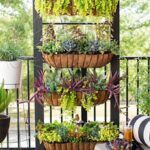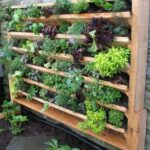Vertical gardening is a great way to maximize your gardening space, especially if you have limited space or want to add some greenery to a small outdoor area. By growing plants vertically, you can create a beautiful and functional garden that not only takes up less space but can also provide privacy, shade, and even fresh produce. In this ultimate guide to vertical gardening, we will explore the benefits of vertical gardening, the best plants to grow vertically, and how to design and create your own vertical garden.
Benefits of Vertical Gardening
There are several benefits to growing plants vertically. One of the main advantages is that you can grow more plants in a smaller space, making it ideal for small gardens, balconies, patios, or even indoor spaces. Vertical gardening also allows you to grow plants that require support or trellises, such as tomatoes, cucumbers, and beans, without taking up valuable ground space.
In addition, vertical gardens can help create a more visually appealing space, adding texture, color, and interest to your garden. They can also provide privacy from neighbors or create a cozy nook for relaxation and enjoyment. Vertical gardening can also help improve air quality, reduce noise pollution, and even insulate a building, making it a sustainable and environmentally friendly choice for gardening.
Best Plants for Vertical Gardening
When choosing plants for a vertical garden, it is important to consider the growing conditions of your space, such as sunlight, temperature, and moisture levels. Some of the best plants for vertical gardening include:
1. Vining plants: These plants are natural climbers and can easily be trained to grow vertically, such as beans, peas, cucumbers, and squash.
2. Climbing flowers: Flowers like morning glories, sweet peas, and clematis add beauty and color to your vertical garden.
3. Herbs: Herbs like mint, basil, thyme, and oregano are great for vertical gardens and can be easily accessed for cooking.
4. Succulents: Succulents are low-maintenance plants that thrive in vertical gardens and can add a unique texture to your space.
Designing and Creating a Vertical Garden
There are many creative ways to design and create a vertical garden. You can use a variety of materials, such as trellises, fences, walls, pallets, and planters, to create a vertical structure for your plants. You can also incorporate hanging planters, wall-mounted planters, or even a living wall system for a more modern and sleek look.
When designing your vertical garden, consider the layout of your space, the types of plants you want to grow, and the overall aesthetic you want to achieve. Make sure to provide adequate support for your plants, such as trellises, stakes, or strings, to help them climb and grow vertically. Also, consider the watering and drainage needs of your plants, as vertical gardens can dry out more quickly than traditional gardens.
In conclusion, vertical gardening is a practical and beautiful way to maximize your gardening space and create a lush and vibrant outdoor oasis. By following this ultimate guide to vertical gardening, you can grow a wide variety of plants vertically, from flowers and herbs to vegetables and succulents, and create a stunning and functional garden that will enhance your outdoor living space for years to come. Happy gardening!













